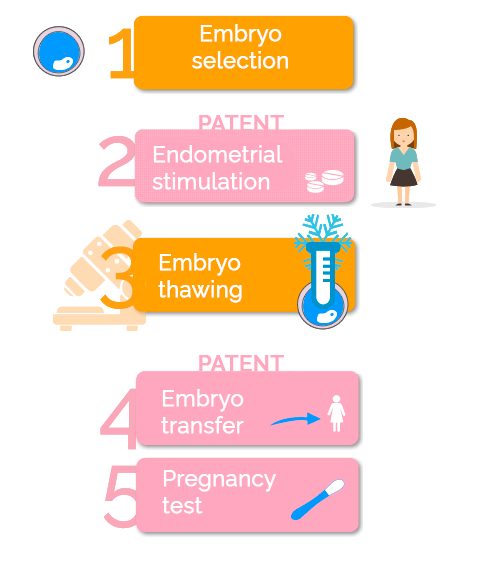Embryo adoption: adoption of embryos

The reception of donated embryos is a technique where a donated and previously vitrified embryo is transferred to the patient. Donated embryos generally come from couples who have undergone an assisted reproduction treatment and have managed to become parents, so the spare embryos are cryopreserved to be donated to another couple.
It is a simple and economical option, since it only requires endometrial preparation of the recipient patient.
What is embryo adoption?

For whom is this technique indicated?
Embryo reception is indicated for
- Couples or single women who want a simple and cheap assisted reproduction treatment.
- Couples or single women where the woman has ovulatory dysfunctions such as premature ovarian failure, menopause or when there is no response to ovarian stimulation.
- Couples or single women who want to adopt, but either the waiting list is too long, or they want to enjoy pregnancy, childbirth and breastfeeding.
- Couples with genetic anomalies in both spouses.
- Couples who have repeatedly failed at other assisted reproduction techniques.
- Couples that have suffered recurrent miscarriages.
Requirements:
- It is necessary for the embryo to share a series of characteristics with the future parents (blood group, Rh and phenotype).
The cost of this reproduction treatment is much lower since the treatment required by the receiving mother is very simple and takes little time. It simply requires to prepare the endometrium and by means of an ultrasound scan to observe the ideal moment for the transfer. Therefore, visits to the assisted reproduction centre are significantly reduced.
Aware that embryo reception can lead to possible emotional changes, at VITA we have a team of psychologists fully available to the patient to provide the necessary support to face the treatment.
Where do the donated embryos come from?
In most cases, the embryos come from couples who have previously undergone an IVF treatment and who, after becoming parents, decide to donate their good-quality surplus embryos to other couples.
These embryos remain frozen by means of vitrification, an ultra-fast freezing technique that allows to cryopreserve them in perfect conditions for future in vitro fertilization cycles.
The probability of success is slightly lower than for an in vitro fertilization with fresh embryos, but taking into account the simplicity of the treatment, its promptness (it only requires endometrial preparation of the recipient patient) and low cost, it is a technique that should be considered.

